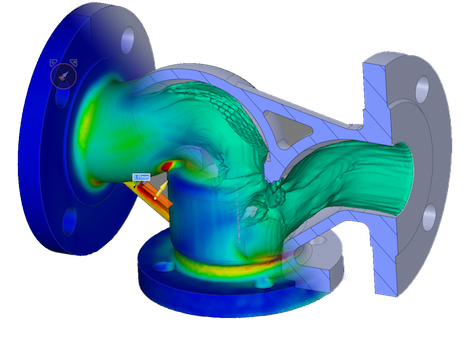
Ever since I moved away from product design and using the tools we write about on a daily basis, I was instantly struck by the desire from most vendors to push things forward.
When you enter the world of technical journalism you get a different view on the industry as a whole and you get to meet a lot more people driving the development of these tools and gain an insight into what drives them.
When I started in this job we were at the cusp of the mainstream revolution. The long-standing vendors were struggling to react to the new kid on the block (SolidWorks), and things were changing for design and engineering technology.
This also marked the beginning of the mainstreaming of simulation.
While simulation and analysis had typically been the preserve of the specialist (and I’ve written enough Ansys or Moldflow scripts to assure you it most definitely was), we were promised simulation tools that would be better integrated with design tools, that the process would become easier and we’d be able to use it regularly as part of the everyday product development process.
Now, fast forward nearly two decades and where are we at? Taking stock of the design tools on the market today, some of which are also approaching or have already had their 20 year anniversaries whilst others are brand spanking new, have things progressed and followed up on that promise?
Simulation, in particular, is something that I’ve always passionately believed can benefit almost every designer or engineer. Surely we’ve got to the point where adoption is widespread and the tools are easy to use?
The reality is that this is probably far from the case.
A little while ago now, we did a bit of research into the world of simulation adoption in the engineering community and the results were surprising.
It turns out that while many users have adopted it, around the 50 per cent mark. That surprised me but what surprised me, even more, was there was a good proportion of our readership that haven’t started to use any form of simulation.
Within that ‘We don’t use it’ bracket there lay further surprises.
As you’d expect, a proportion do not believe they have any requirement for it, specifically that the projects they work on couldn’t justify the use of simulation.
Alongside this, another good proportion of our readers have bought into simulation (included as part of their design and engineering software) but simply don’t use it.
Imagine that. Buying software that you don’t take advantage of, but it’s understandable.
Simulation has, since its inception, been a complex business. Using it effectively and efficiently means you need to be able to take your (and your team’s) inherent knowledge about your products – such as materials and operating conditions/performance requirements – and translate it into the often arcane and abstract language used in simulation systems.
Then there’s the process of set-up of your studies. You’ve got your CAD geometry, but it typically needs to be de-featured, readied and meshed. That process alone, can be difficult and iterative.
Then there’s the efficiency of the systems we had and still have. Simulation is a compute intensive process.
Anything other than trivial studies requires some serious compute power and time.
Yes, today’s workstations provide immense bang for the buck, but if you’re working on large projects, you’re going to need both time and cash to get things working. The move to the cloud hasn’t really made things any quicker — it still takes just as long, it just means that you don’t need to buy a honking great workstation to do it.
When it comes to post processing and results interpretation, which is perhaps one of the most infuriating parts of the process, the old line of “blue means good, red means bad” still pervades, and it’s still bullshit.
All-in-all, what we still have is a set of tools that are too complex to use, even for those that have acquired them.
They use arcane language, have an over complicated workflow and take too long to compute results that are difficult to interpret. That’s an environment which is nowhere near conducive to regular, consistent and efficient use of the benefits of simulation as a core.
If this strikes a cord, you might want to tune in tomorrow for more and register for what Ansys is launching.






